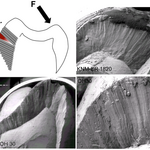Anthropology

Western humans are rare in that we drink milk after weaning. Milk is the staple food for infants and contains the sugar lactose but most mammals lose the ability to digest lactose, and thus milk, as they get older.
The ability to digest the sugar is governed by the production of the enzyme lactase in the small intestine. As children get older, the lactase gene is gradually disabled, which means that no lactase is formed and the lactose enters the colon undigested, where it is typically converted into acids and hydrogen gas and, in many people, causes the painful symptoms of…

It was once commonly known than ancient Carthaginians sacrificed their children. The evidence was right there, in historical documents and graves.
The city-state of ancient Carthage was a Phoenician colony located in what is now Tunisia. It operated from around 800 B.C. until 146 B.C., when it was destroyed by the Romans. According to historical telling and physical evidence, children – both male and female, mostly a few weeks old – were sacrificed by Carthaginians at locations known as tophets. The practice was also carried out by their neighbors at other Phoenician colonies in Sicily,…

Children who grow up in dangerous neighborhoods exhibit more aggressive behavior, according to a new paper in Societies.
Lots of U.S. studies have suggested a link between dangerous neighborhoods and aggressive behavior in kids but the authors of the new paper wanted to determine whether the pattern held true worldwide. So they interviewed parents and children from 1,293 families in nine countries: China, Colombia, Italy, Jordan, Kenya, the Philippines, Sweden, Thailand and the United States.
The questions involved dangers in their neighborhoods. Based on the answers, the researchers scored…

When tragedies happen, politicians aim to yell on the floors of Congress about how tragedies must be stopped.
And gun tragedies should be entirely preventable, claim gun ban proponents. Just ban guns. It may make sense to assume that states in which there are tight laws make that state safer and lead to less gun crime, but that data show that the very opposite is true. You can't get a concealed weapon permit in Illinois but Chicago leads the US in gun murders. In 2013, a concealed carry bill was passed, making Illinois the final state to issue concealed gun carry permits.
Writing in…

You may think you eat too much but humans (and other primates) actually burn 50% fewer calories each day than other mammals, according to a study in the Proceedings of the National Academy of Sciences.
Our remarkably slow metabolisms explain why humans and other primates grow up slowly and live long lives.
Most mammals, like your family dog or pet hamster, live a rather fast-paced life, reaching adulthood in a matter of months, reproducing and dying in their teens. By comparison, humans, apes, monkeys, tarsiers, lorises and other primates have long childhoods, reproduce infrequently, and…

Paranthropus boisei, nicknamed "Nutcracker Man" because of his big flat molar teeth and powerful jaws,lived in East Africa between 2.4 million-1.4 million years ago.
A new paper postulates that he survived mainly on a diet of tiger nuts - edible grass bulbs still eaten in parts of the world today- along with fruits and invertebrates, like worms and grasshoppers.
Scholars have debated why this early human relative had such strong jaws, indicating a diet of hard foods like nuts, yet their teeth seemed to be made for consuming soft foods. Damage to the tooth enamel also…

An analysis of thyroid hormones from urine samples of zoo-living chimpanzees and bonobos has led anthropologists to conclude that hormone levels may be why chimpanzees and bonobos share similar starting conditions at birth but develop different behavioral patterns later in life.
The researchers from the Max Planck Institute for Evolutionary Anthropology in Leipzig and the Royal Zoological Society of Antwerp discovered that bonobos retain elevated thyroid hormone concentrations well into adulthood, whereas in humans and chimpanzees thyroid hormone concentrations decline after puberty.…

Neanderthals buried their dead, according to an international team of archaeologists after a 13-year study of remains discovered in southwestern France which seeks to end a long-standing controversy.
They say it confirms that burials took place in western Europe prior to the arrival of modern humans.
The findings center on Neanderthal remains first discovered in 1908 at La Chapelle-aux-Saints in southwestern France. The well-preserved bones led its early 20th-century excavators to posit that the site marked a burial ground created by a predecessor to early modern humans. However, their…

Young adults want to live n cities. No surprise there, cities have more nightlife and activity. What is a surprise is the claims that young adults instead want to live in cities because of mass transit, and high-density housing. If those were so terrific, people would not move to the suburbs when they have families.
Professor Markus Moos of the Faculty of Environment at the University of Waterloo sought to debunk ideas of neighborhood gentrification defined along class lines, so he focused on urban core areas increasingly populated by young adults who have delayed child-bearing and…

In
his examination of health care globalization, Going Global in Century XXI: Medical Anthropology and the New Primary Health Care (2004), Craig Janes addresses the
problem of a lack of innovative tools and mechanisms with regard to
health care in local communities in a growing global society and global
health reform.
Global health care reform began with a structure that
included locally held values and important community-focused mechanisms
in a format referred to as the Alma Ata strategy, named for the meeting
place of the World Assembly in 1978 (Janes 458). The Alma Ata strategy
was…